by Siddharth Singh Bhaisora
Published On Sept. 30, 2023
This year Nifty 50 has given 7.82% in returns while the broader Nifty 500 has given 11.34%, which means smallcaps and midcaps have performed much better than largecaps - not surprising since we saw a strong rally this year in this space. Now beyond the Nifty 500, there are microcap stocks. And these microcap stocks used to be under-the-radar, but are seeing significant interest from retail investors, investment managers, and even mutual fund houses launching their indices to track the space. These stocks have given an index return of 43% growth for the current year.
There’s a lot of misconception about microcaps - what are microcaps, what are the risks associated with them, how have they performed historically and much more. Let’s first understand the basics and then look at how they are doing.
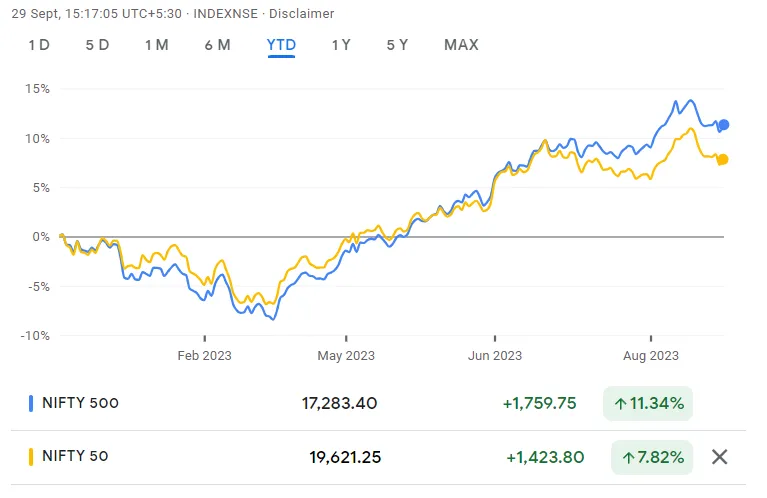
Let's first understand What is micro cap stock in India? Micro Cap Market Capitalization India refer to shares of publicly traded companies with relatively smaller market capitalization. Micro cap market capitalization in India is a key metric used to categorize the smallest publicly traded companies based on their total market value.
There are currently over 5,000 companies listed on the BSE and in excess of 2,000 on the NSE. Large-cap stocks, as defined by SEBI, are the top 100 companies based on market capitalization, while mid-caps rank from 101st to 250th, and small-caps from 251st and beyond. While SEBI hasn’t officially provided a definition for microcap stocks, stocks that are falling outside the top 500 in terms of market capitalization are usually referred to as microcap stocks. In India, micro cap market capitalization typically includes companies under Rs 5,000 crore.
These companies, classified under micro cap market capitalization India, are generally smaller in size and may not have the extensive operational histories of larger firms. However, these stocks are also often in the early stages of growth and have a higher potential for significant returns compared to larger, more established companies. Investing in micro cap market capitalization India offers high growth potential but also entails higher volatility and risk due to their limited market presence and financial stability.
By understanding what is micro cap stock in India, we also realize that there is also higher risk due to less liquidity, limited financial resources, and greater vulnerability to market fluctuations. Investors seeking high-growth opportunities often explore what is micro cap stock in India as part of a diversified portfolio to leverage the potential upside while managing associated risks. Therefore, understanding the dynamics of micro cap market capitalization India is crucial for investors looking to capitalize on emerging opportunities while balancing the inherent risks.
As of March 2023, cumulative net income of microcap companies had increased from ₹4,496 cr in 2017 to a ₹31,544 cr. Furthermore, out of 250 microcap companies, 218 were profitable with 137 having a profit of more than Rs. 100 cr in 2023 compared to only 56 in 2017. Microcap stocks are also not penny stocks which are typically priced less than Rs.10. Low share prices doesn’t mean low market capitalization.
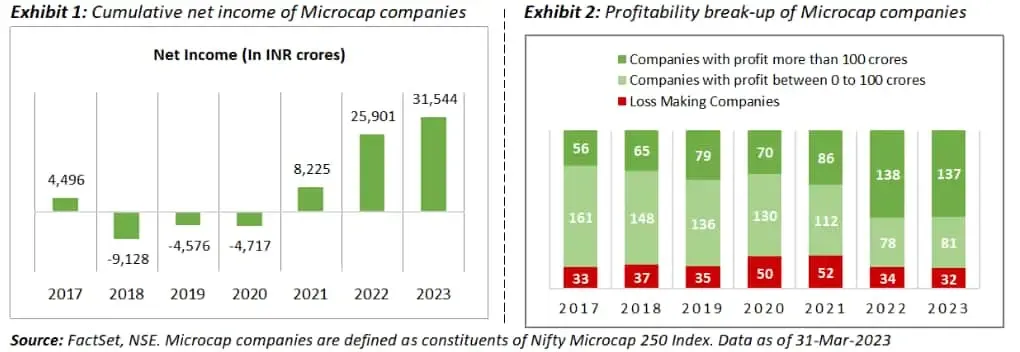
As of June 2023, here is the transition of microcap towards smallcaps , midcaps and largecaps.
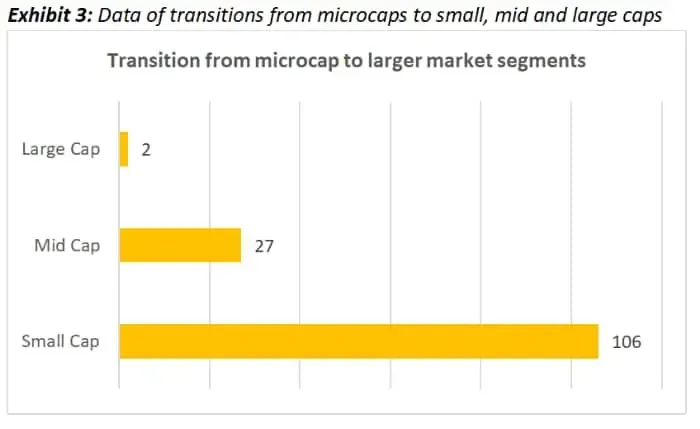
The Nifty Microcap 250 index features the leading 250 firms outside the Nifty 500 index, representing micro-cap companies ranked from 501st to 750th based on their average total market capitalization. Its stock weight depends on its free-float market capitalisation. Let’s look at how microcaps are performing in 2023.
Data for the current year shows Nifty Microcap 250 index's impressive 43% growth. For perspective, the Nifty Smallcap 250 grew by 29%, the Nifty Midcap 150 by 26%, and the Nifty 50 by 7.8% over the same timeframe. When we look at August, the Nifty Microcap 250 Index's price index recorded an impressive 48.67% annual return, with its Total Return Index variant not far behind at 49.52%.
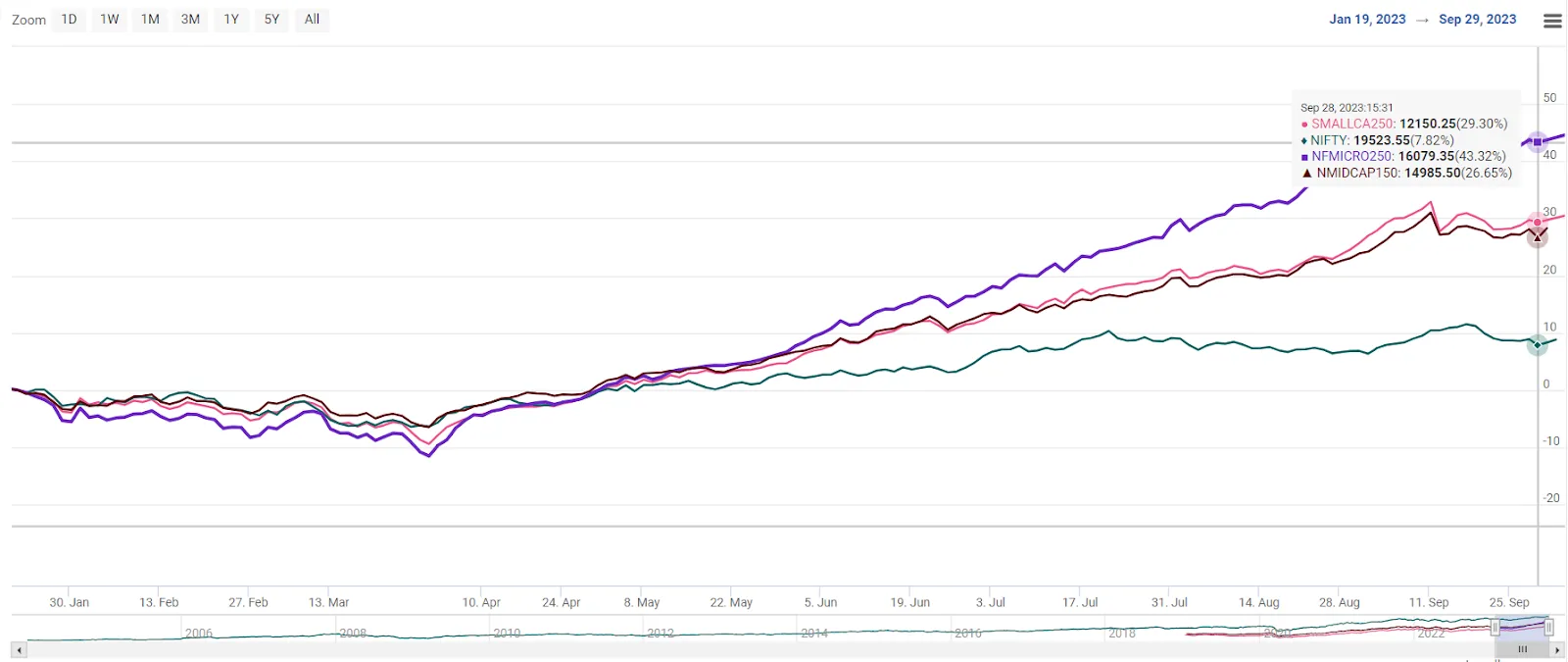
Read our Complete guide to Invest in Smallcap Stocks.
September has been more volatile. The market correction for smallcaps and midcaps in the second week of September resulted in a sharper correction for the microcap space as well. By the end of this month, it appears microcap index increased by 1.45%, but are still below its highest point in September.
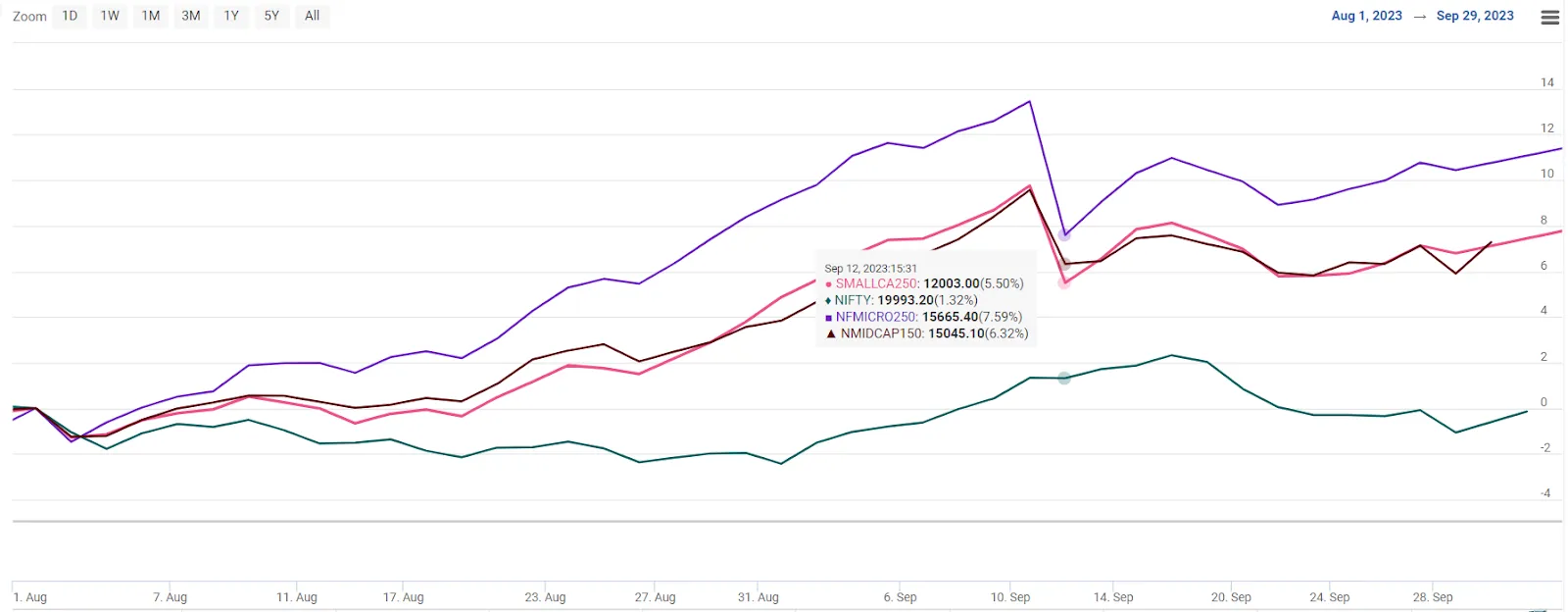
Historically, micro-caps have also shown a trend of outperforming the largercap Nifty 50 index and other indices over longer durations. Nifty Micro-Cap 250 TRI had a meteoric rise of 574% from its March 2020 lows. In contrast, the Nifty 50 TRI, Nifty Mid-Cap 150 TRI, and Nifty Small-Cap 250 TRI registered gains of 176%, 275%, and 321% respectively.
With the rally somewhat corrected in microcap stocks in September, their valuations are high when we look at the P/E ratios which could indicate potential overvaluation. High P/E ratios can often precede corrections or a market slowdown.
Read our detailed blog on SME Stocks Are Booming: Should You Invest In SME IPOs? Where we discuss some of the challenges investors should be aware of when investing in SME IPOs.
Smallcap funds have a higher allocation to microcaps than other mutual funds having pumped in around Rs. 30,219 cr into microcap stocks. Prime MF Database found that DSP Small Cap has the highest allocation to microcaps at 27%, followed by Quant Small Cap at 22%. In absolute terms, Nippon India Small Cap has Rs 5,952 crore, and HDFC Small Cap has Rs 4,483 crore allocated to microcap stocks.
Valuation of micro-cap stocks within mutual fund schemes jumped 32% from Rs 45,482 crore in September 2022 to Rs 60,229 crore in August 2023. Contrastingly, the entire mutual fund industry, worth Rs 46.33 lakh crore, observed a growth rate of 22%.
Figures in Rs. Cr | Largecap | Midcap | Smallcap | Microcap | % of microcaps in equity AUM |
DSP Small Cap | 127 | 1,208 | 7,030 | 3,083 | 27 |
Quant Small Cap | 1,119 | 210 | 4,009 | 1,533 | 22 |
HDFC Small Cap | 802 | 1,986 | 13,584 | 4,483 | 21 |
Nippon India Small Cap | 4,740 | 5,268 | 18,847 | 5,952 | 17 |
Kotak Small Cap | 546 | 2,663 | 6,418 | 1,766 | 16 |
Franklin India Smaller Companies | 522 | 979 | 6,094 | 1,171 | 13 |
Canara Rob Small Cap | 947 | 1,061 | 4,364 | 837 | 12 |
Axis Small Cap | 404 | 2,598 | 9,677 | 1,496 | 11 |
HSBC Small Cap | 310 | 2,948 | 6,918 | 1,117 | 10 |
SBI Small Cap | 138 | 3,245 | 12,218 | 1,699 | 10 |
We are now seeing interest from large mutual fund houses. The Motilal Oswal Nifty Microcap 250 Index Fund is a passive fund which has grown from an AUM of Rs. 120 Cr in June 2023 to Rs. 324.36 Cr in just a few months. This passive fund has given a return of 20.28% since inception.
The Bandhan Mutual Fund is planning to launch an actively managed micro-cap fund - they will include in their active fund those companies that are below 50% of the lowest midcap's market cap. Bandhan's 'long-tail' strategy will invest in a vast number of stocks in the microcap space as defined by them above, each having a small portfolio percentage. This not only addresses liquidity concerns but also diversifies risk albeit within a risky space to begin with. Nifty Microcap 250 Total Return Index will be the benchmark for both of these investment schemes.
The micro-cap's stellar performance isn't accidental. There is a known pattern - some of the biggest gainers in midcap, smallcap and microcap are directly or indirectly benefiting from substantial government capital expenditure that has been going on for a few years, with significantly higher budgetary allocations for the current year. Many smallcap and microcap companies are swamped with orders for the foreseeable future.
Railway modernisation has given a boost to many companies like Jupiter Wagons (309%), Indian Railway Finance Corporation (132%) and Titagarh Rail (66%). The recent Budget earmarked a whopping ₹10 trillion for infrastructure, with the railway ministry allocated ₹2.40 trillion – a 75% increase from FY23. Read more in our complete analysis of the Indian Railway Sector and Top Railway stocks .
Defence Production and Export Promotion Policy 2020 (DPEPP) outlines a revenue target of ₹1.75 trillion by FY25. This suggests a 15% CAGR from 2019 to 2025, with domestic procurement expected to double to ₹1.40 trillion by 2025.
Infrastructure firms capitalising on government initiatives include Patel Engineering (194%) and Genus Power (201%).
No right answer. Markets have been volatile, after hitting all time highs. There is mixed optimism in the broader market, with concerns regarding consumer consumption data, inflation, higher interest rate regime, high crude oil prices, geopolitical concerns and much more, several factors may impact the microcaps rally and its sustainability:
Tax Revenues: Government needs consistent tax inflows to be able to allocate high budgets to important sectors. While GST revenues fell on a month on month basis in August, they increased by 11% on a year on year basis. Direct tax revenues haven't shown much growth either
Rupee's Value: Strong dollar means weaker rupee especially when we factor in higher crude oil prices, decreasing competitiveness of exports - all of which could impact growth
Government Spending: As we can see with China’s real estate sector and high debt levels, unchecked government spending can lead to inefficiencies that come back to bite you. Long-term impact of the Indian government's investment in railways, defence, infrastructure and even other sectors is yet to be seen.
The benefits of the Microcaps we have already seen in terms of the performance above. Let’s explore the risks in depth here. Microcaps are sensitive to both micro and macro factors, exhibit considerable daily price volatility, see liquidity challenges due to limited trades, etc.
Liquidity Issues: Trading volumes are often lower, making entry and exit challenging.
Volatility & Significant downside risks: Micro-caps, despite their historical returns, are more volatile and can see significant price swings, influenced by both market sentiment and company-specific news.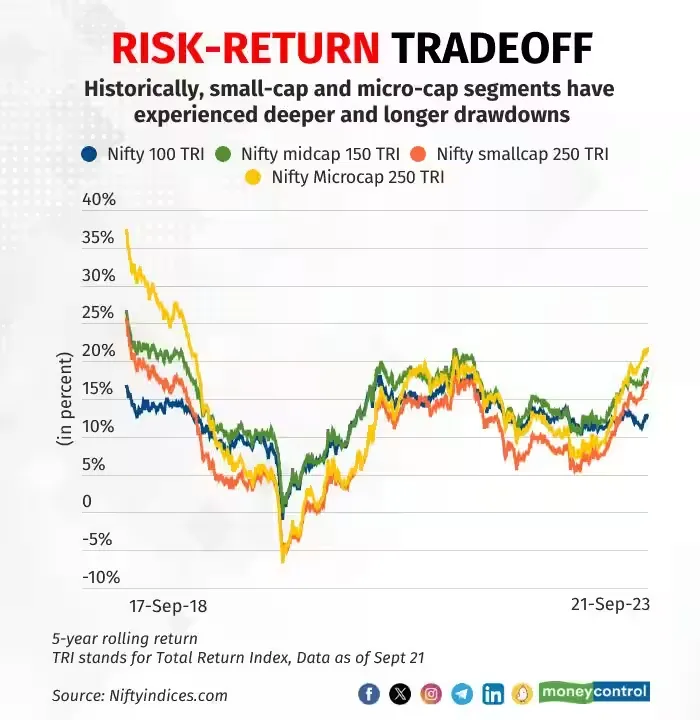
Limited Information: Fewer analysts cover these stocks, leading to lesser information available publicly
Potential for Fraud: With lesser scrutiny, some micro-caps might indulge in misleading practices.
Business Risk: Given their size, these companies are more vulnerable to market dynamics.
Lack of Institutional Interest: Fewer institutional investors venture into this space, leading to less stability.
Long-term Viability: Questions arise about the long-term business model and survivability of these companies.
Market Manipulation: Smaller market size makes these stocks more susceptible to manipulation.
In essence, microcaps' high-beta nature means that while they do well in bull markets, when there are market corrections or high volatility they are also negatively affected more than the broader market. Not every micro-cap stock is a potential multibagger. Although many might rally during bull markets this could also be due to irrational exuberance as is the case during many bull markets irrespective of the earnings potential of the company. Only a select few are resilient enough during market corrections.
Competitive Advantage: Catalysts can include new leadership, strong government backing for the sector, monopolisation of specific segments within a market, market or product expansion, acquisitions, or profitability achievements. Sustainable competitive advantage act as catalysts to help grow the company and the stock
Quality of Management: Good governance, known and competent management are essential, especially for microcap companies. Assess if the team can execute the strategy and if the CEO can manage the company’s growth. Make sure the board is independent and reputed.
Rising Sales and Profits: We have seen out of 250 microcap companies, 218 were profitable with 137 having a profit of more than Rs. 100 cr in 2023. Microcap companies with a strong track record of regular sales, growing sales or regular strong net income can be solid investment choices.
Cash Flow: A company's cash flow should be positive or trending positive over time. If not, it might not be a wise investment. Monitor company reports to analyse the cashflow and determine business growth.
Price-Earnings Ratio (P/E): This crucial metric can indicate whether a company's shares are over- or undervalued. Be cautious if the P/E exceeds 35.
Debt/Equity: Cash is always king. Find microcap stocks that have ideally no debt since it gives the company more flexibility without any recurring liabilities and avoids equity dilution risk. Avoid firms that have over 30 to 50%+ net debt to equity ratio. This ratio reveals the debt per rupee of ownership. High debt can be a warning sign, so examine debt levels carefully.
High Operating Margin: A consistently increasing operating profit margin is a good sign and can suggest a promising investment opportunity.
Institutional Activity & Analyst Coverage: Microcaps typically will have limited, if any analyst coverage, and most large FIIs may be restricted from investing. However, researching in sector reports, talking to industry analysts and watching mutual fund investing activity could give some insights
Kolte-Patil Developers Ltd (KPDL) is a leading real estate developer in India with a strong financial position and track record of growth. However, the real estate sector is cyclical, and KPDL faces competition from other established developers. Investors should consider these risks before investing in KPDL.
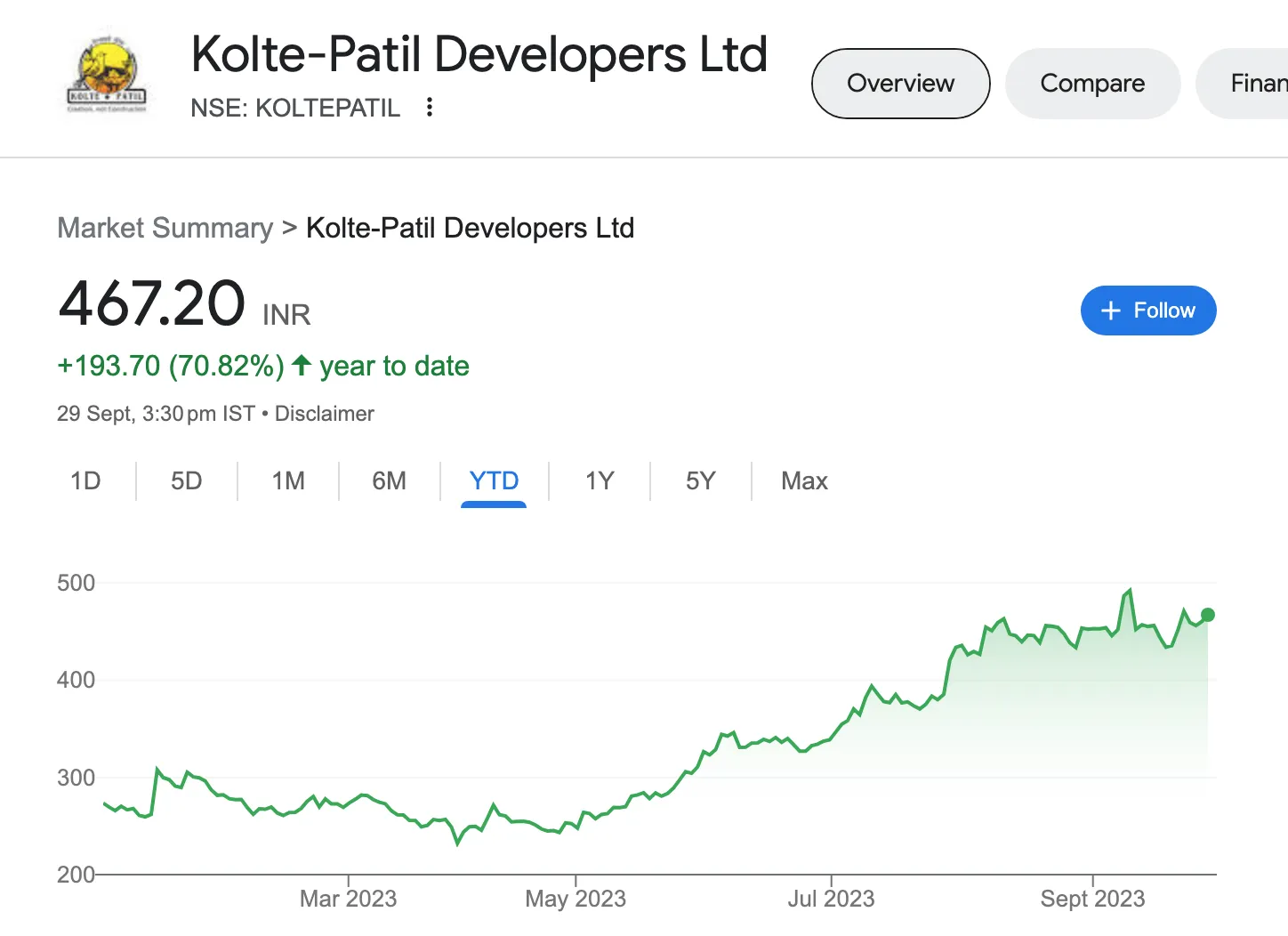
Nucleus Software is a financially sound IT company with a strong track record of growth in the banking and financial services sector. It is a good investment option for investors who are looking for exposure to this growing sector, but they should be aware of the premium valuation.
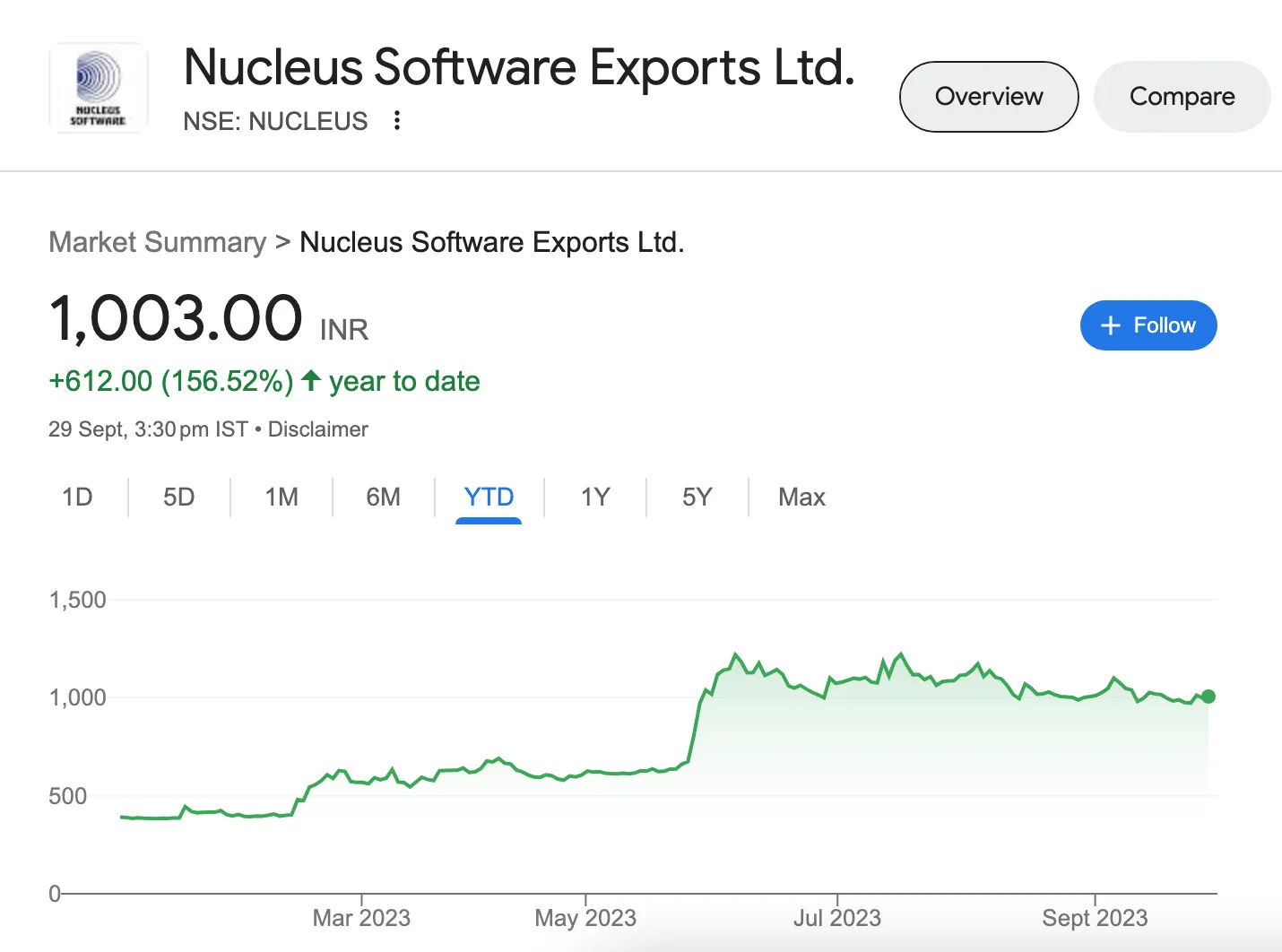
Mangalam Seeds is a leading seed company in India with a strong financial position and track record of growth. The company's stock is currently trading at a reasonable valuation, making it a good investment option for investors who are looking for exposure to the Indian seed sector. However, investors should consider the cyclical nature of the seed sector and the competition from other established companies before investing in Mangalam Seeds.
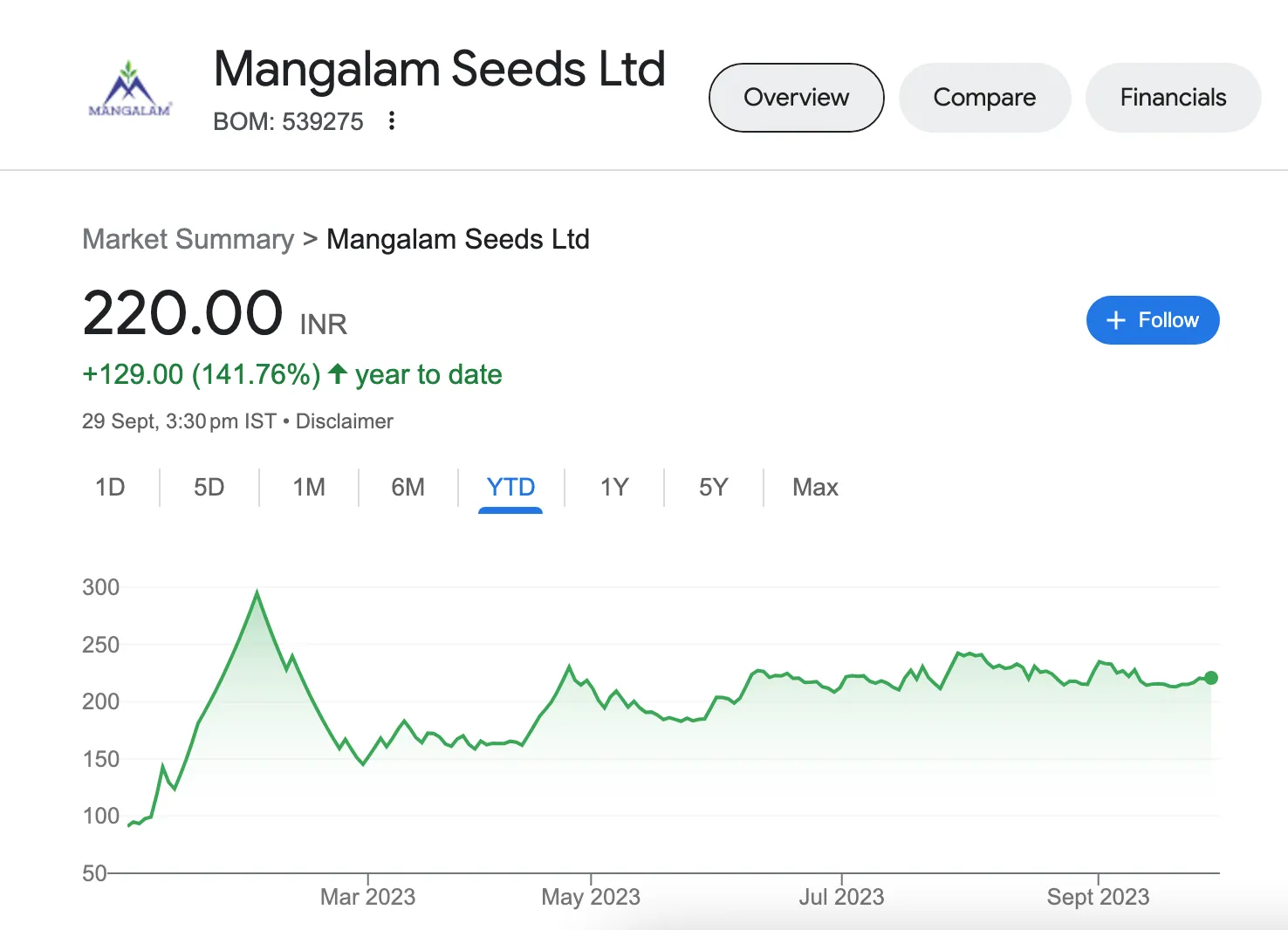
Loyal Equipments is a small-cap engineering company in India with a strong financial position and track record of growth. The company's stock is currently trading at a reasonable valuation, making it a good investment option for investors who are looking for exposure to the Indian engineering sector. However, investors should consider the cyclical nature of the engineering sector and the competition from other established companies before investing in Loyal Equipments.
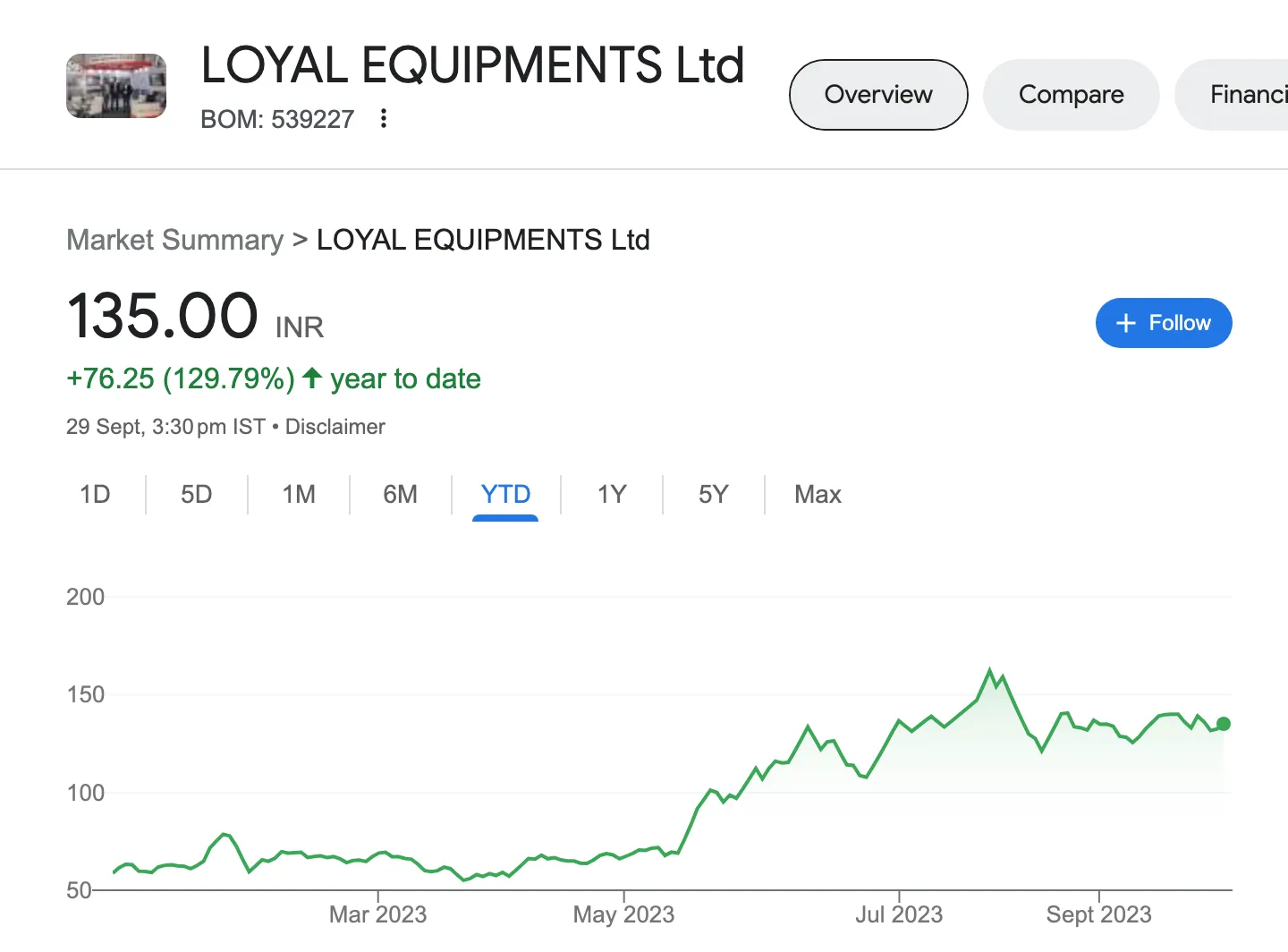
Kingfa India is a leading PP manufacturer in India with a strong financial position and track record of growth. The company's stock is currently trading at a reasonable valuation, making it a good investment option for investors who are looking for exposure to the Indian plastics sector. However, investors should consider the cyclical nature of the plastics sector and the competition from other established manufacturers before investing in Kingfa India.
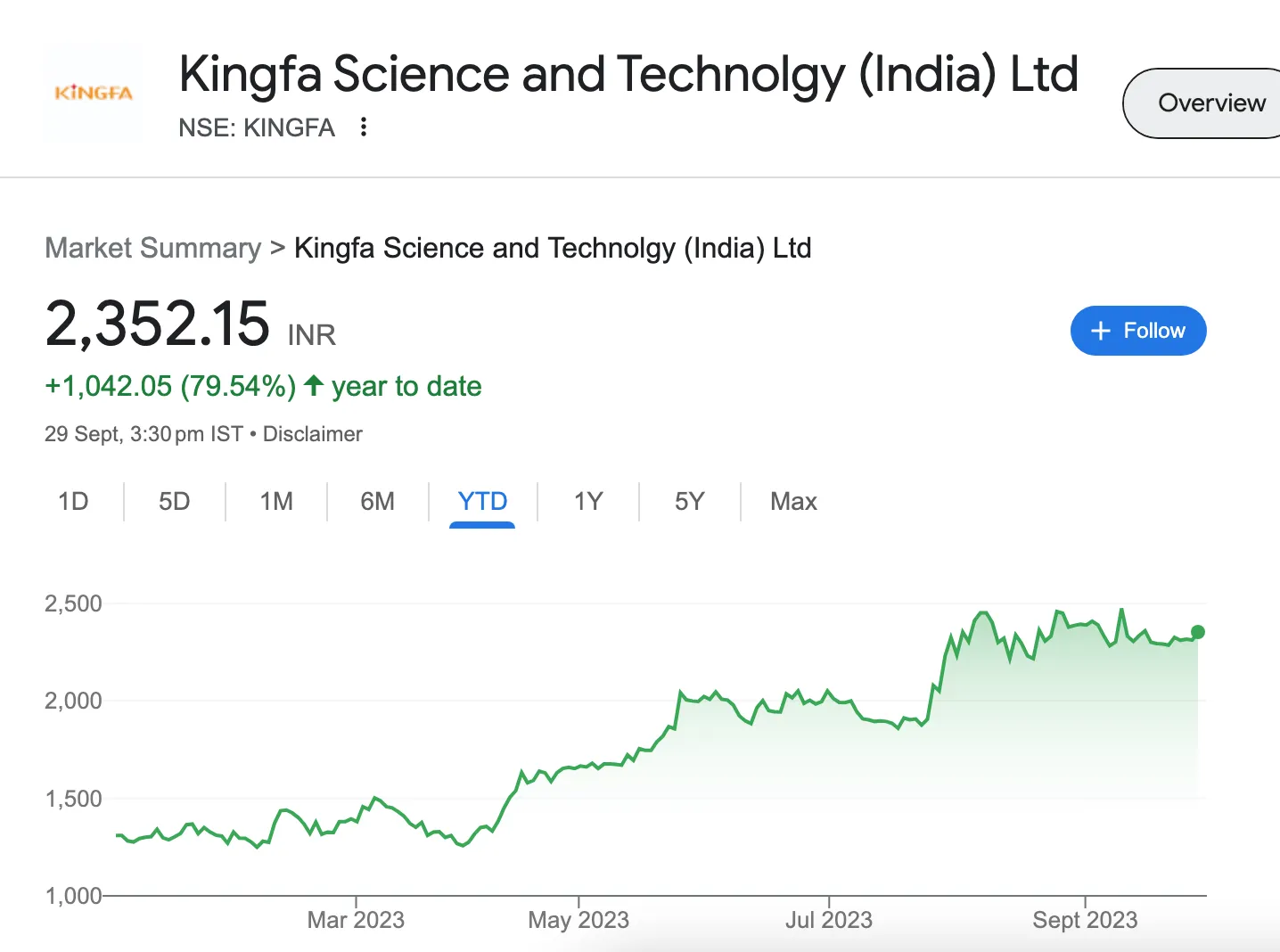
Microcap stocks may promise long-term returns but are also highly susceptible to short-term volatility. While midcaps and smallcaps can be bundled under a broad strategy umbrella, the same doesn't apply to micro-caps. In the microcap domain, investment decisions must be highly specific, focusing on individual stocks rather than the entire segment. We need to be careful and selective in identifying the correct microcaps to invest in.
Read the full article on Wright Research What is a Micro Cap Stock? Which are the Best Micro Cap Stocks in India in 2023
Join our Telegram Channel to get daily morning market updates. Subscribe to our Youtube Channel to learn about all things investing, understand sector performance, get key insights into new topics like concentrated portfolio, quantitative investing and more!
Read our article to understand the SME stocks rally, and whether you should invest in SME IPOs, SME Stocks Are Booming: Should You Invest In SME IPOs?
Discover investment portfolios that are designed for maximum returns at low risk.
Learn how we choose the right asset mix for your risk profile across all market conditions.
Get weekly market insights and facts right in your inbox
It depicts the actual and verifiable returns generated by the portfolios of SEBI registered entities. Live performance does not include any backtested data or claim and does not guarantee future returns.
By proceeding, you understand that investments are subjected to market risks and agree that returns shown on the platform were not used as an advertisement or promotion to influence your investment decisions.
“I was drawn to Wright Research due to its multi-factor approach. Their Balanced MFT is an excellent product.”

By Prashant Sharma
CTO, Zydus
By signing up, you agree to our Terms and Privacy Policy
“I was drawn to Wright Research due to its multi-factor approach. Their Balanced MFT is an excellent product.”

By Prashant Sharma
CTO, Zydus
Skip Password
By signing up, you agree to our Terms and Privacy Policy
“I was drawn to Wright Research due to its multi-factor approach. Their Balanced MFT is an excellent product.”

By Prashant Sharma
CTO, Zydus
“I was drawn to Wright Research due to its multi-factor approach. Their Balanced MFT is an excellent product.”

By Prashant Sharma
CTO, Zydus
Log in with Password →
By logging in, you agree to our Terms and Privacy Policy
“I was drawn to Wright Research due to its multi-factor approach. Their Balanced MFT is an excellent product.”

By Prashant Sharma
CTO, Zydus
Log in with OTP →
By logging in, you agree to our Terms and Privacy Policy
“I was drawn to Wright Research due to its multi-factor approach. Their Balanced MFT is an excellent product.”

By Prashant Sharma
CTO, Zydus
Answer these questions to get a personalized portfolio or skip to see trending portfolios.
Answer these questions to get a personalized portfolio or skip to see trending portfolios.
(You can choose multiple options)
Answer these questions to get a personalized portfolio or skip to see trending portfolios.
Answer these questions to get a personalized portfolio or skip to see trending portfolios.
Answer these questions to get a personalized portfolio or skip to see trending portfolios.
(You can choose multiple options)
Investor Profile Score
We've tailored Portfolio Management services for your profile.
View Recommended Portfolios Restart